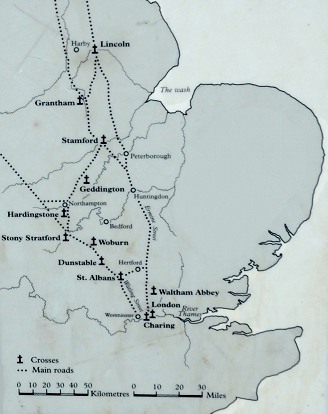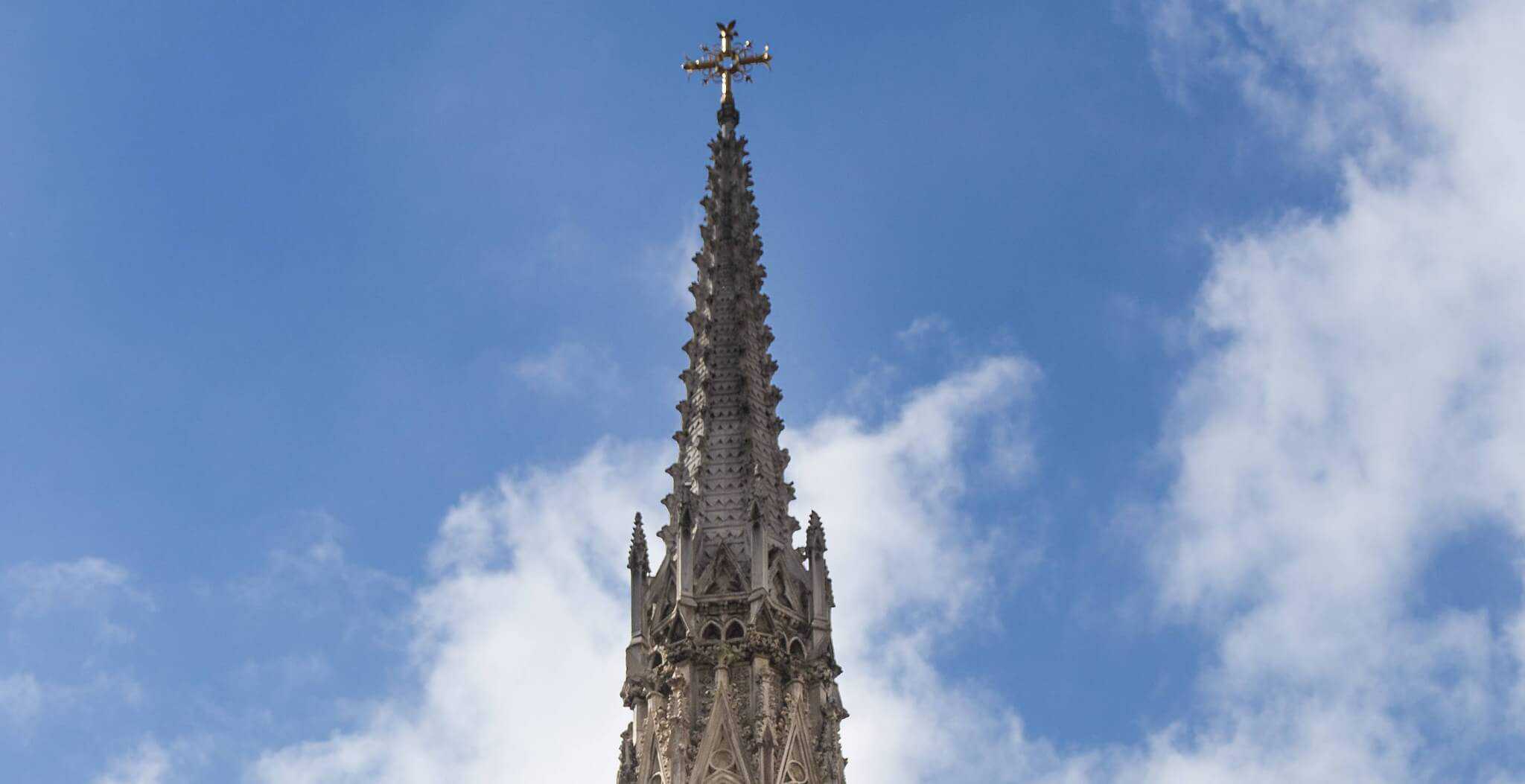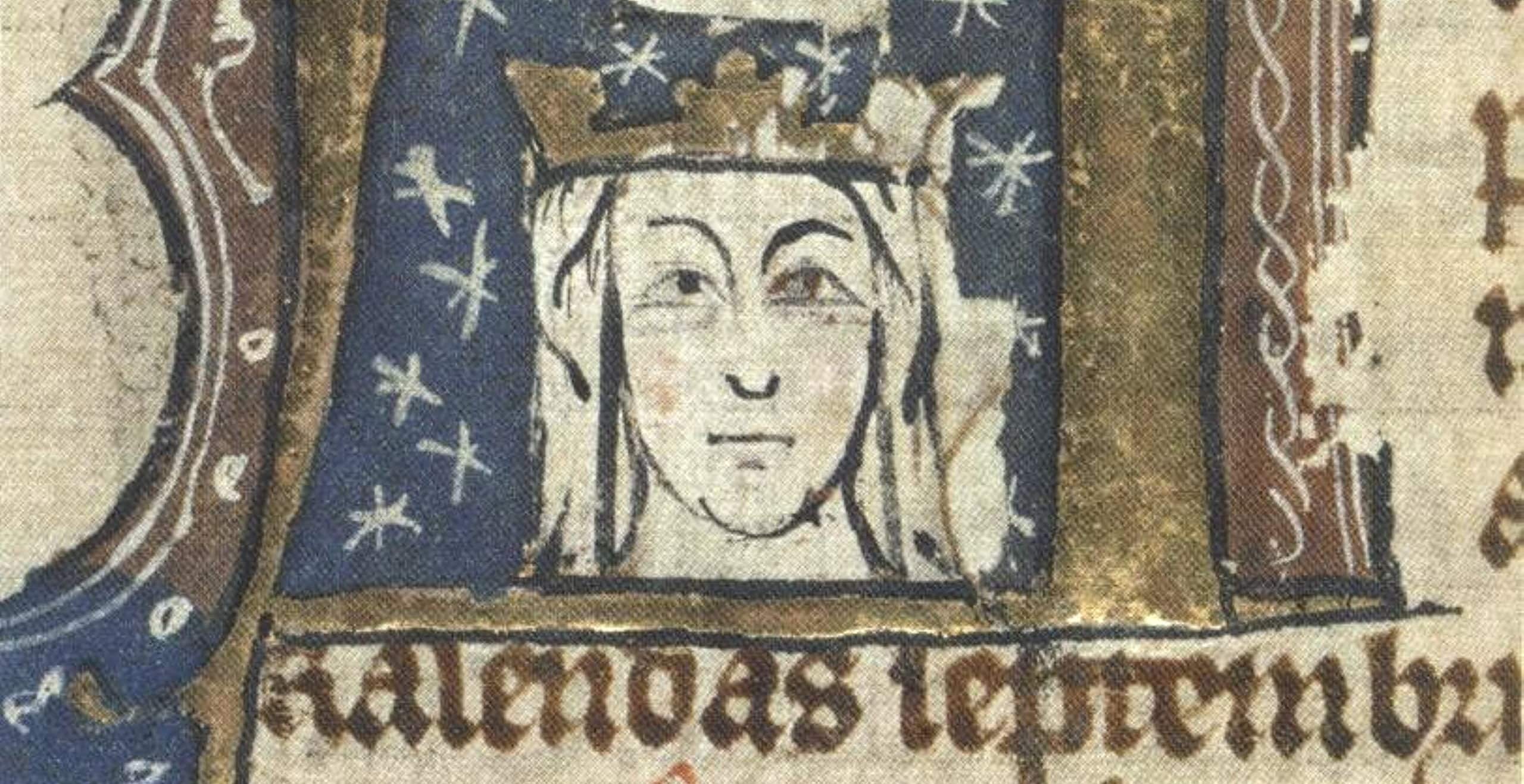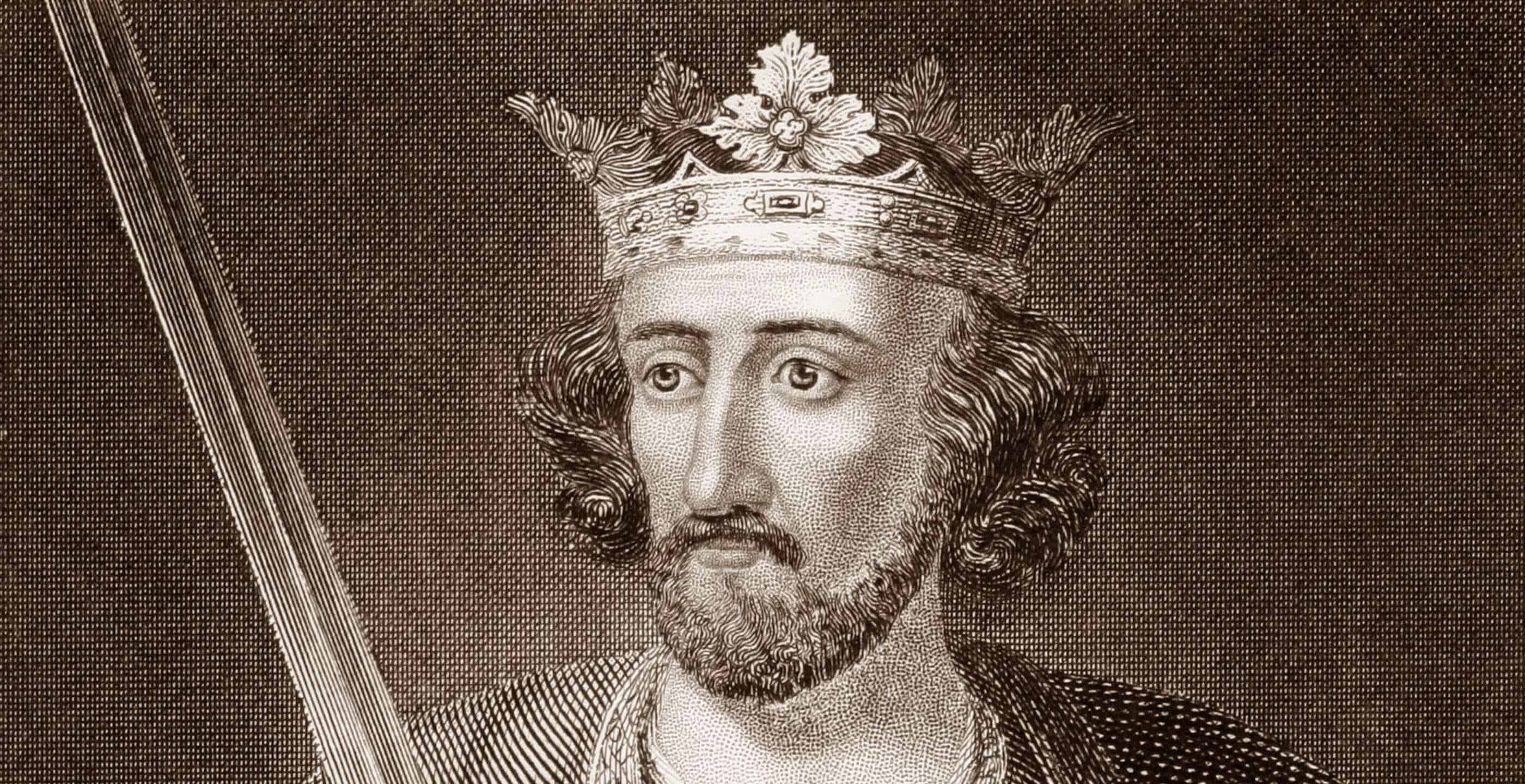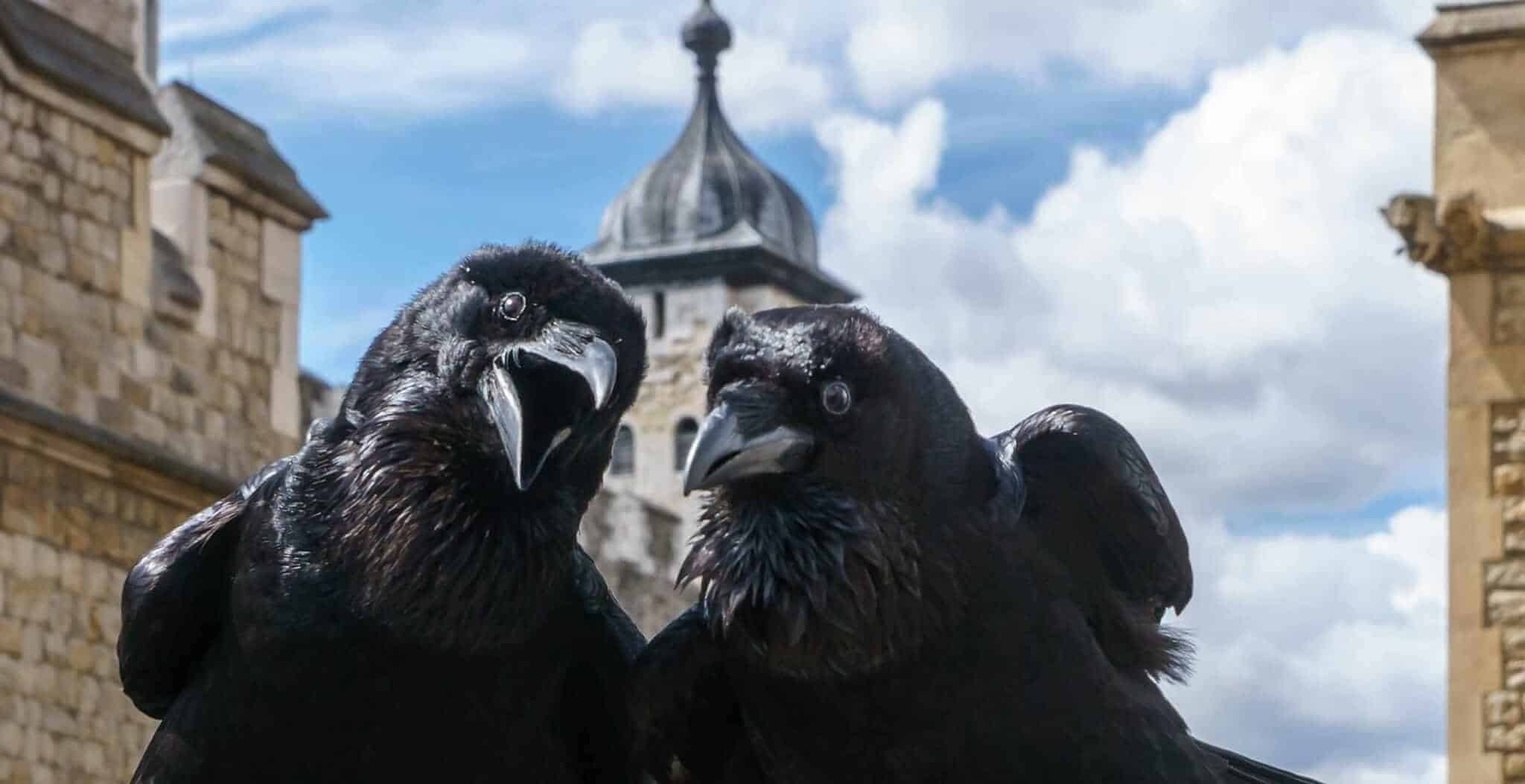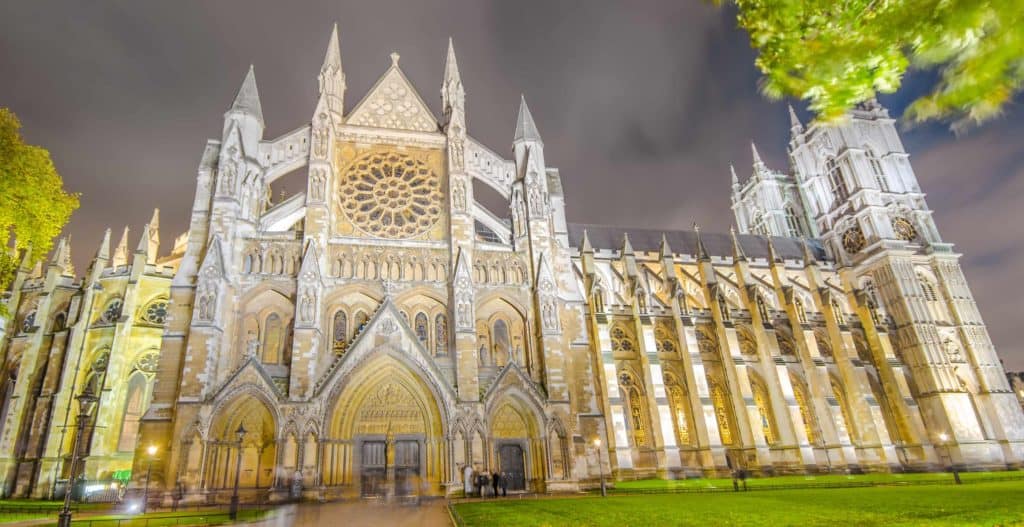The first queen of Edward I would perhaps have been completely forgotten had it not been for her husband’s dramatic memorials to her that were erected following her death in 1290.
These were the beautiful ‘Eleanor Crosses’ …the most famous one giving Charing Cross in London its name.
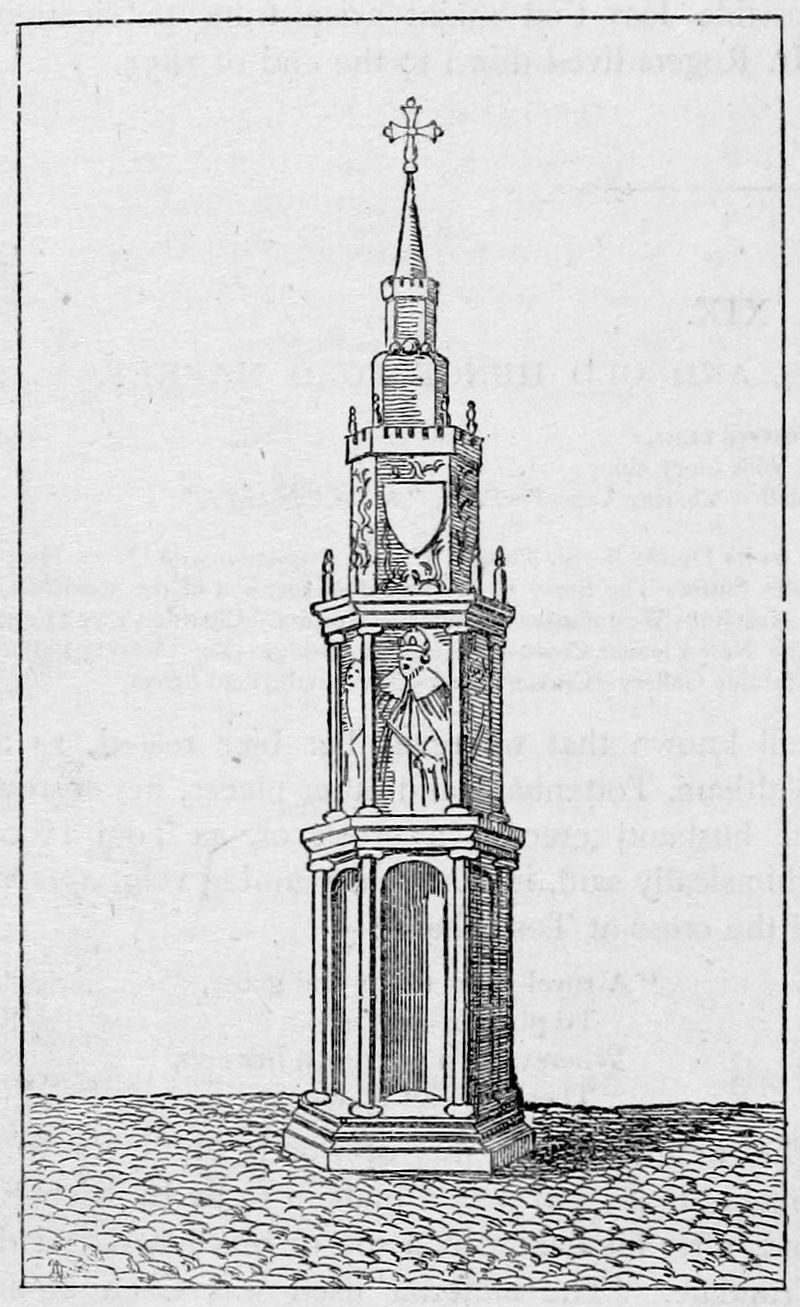
Eleanor of Castile was only ten when she left her mother country Spain and arrived in England in 1254 to marry Edward (also known as Longshanks).
As she was so very young at the time of their marriage, Edward went off for a few years, indulging in his favourite pastimes of war, tournaments and more war. He must have stopped fighting occasionally as they went on to have sixteen children together! It appears to have been a happy marriage in that they were rarely apart, Eleanor often travelling with Edward.
Edward’s life was full of warfare and after a successful campaign in Wales, he then turned his attention to Scotland. He wrote to Eleanor asking her to join him in the north, but she was taken ill on the journey and died in a little village called Harby in Nottinghamshire.
Edward was devastated and rushed back south to make arrangements for her funeral. Her body had to be taken back to Westminster in stages, and Edward had a beautiful memorial cross erected in each of the stopping places. In all there were twelve of these: Lincoln, Grantham, Stamford, Geddington, Northampton, Stony Stratford, Woburn, Dunstable, St. Albans, Waltham, Cheapside, and the best known of all, Charing, then a little village near Westminster and nowadays named after the cross, Charing Cross.
Today only those at Geddington, Hardingstone near Northampton and Waltham Cross still remain.
The Eleanor Cross in the village of Geddington, just off the A43 between Corby and Kettering, is original and maintained by English Heritage. The cross is situated off the main road by the church and close to the pretty 12th century bridge and ford over the River Ise.
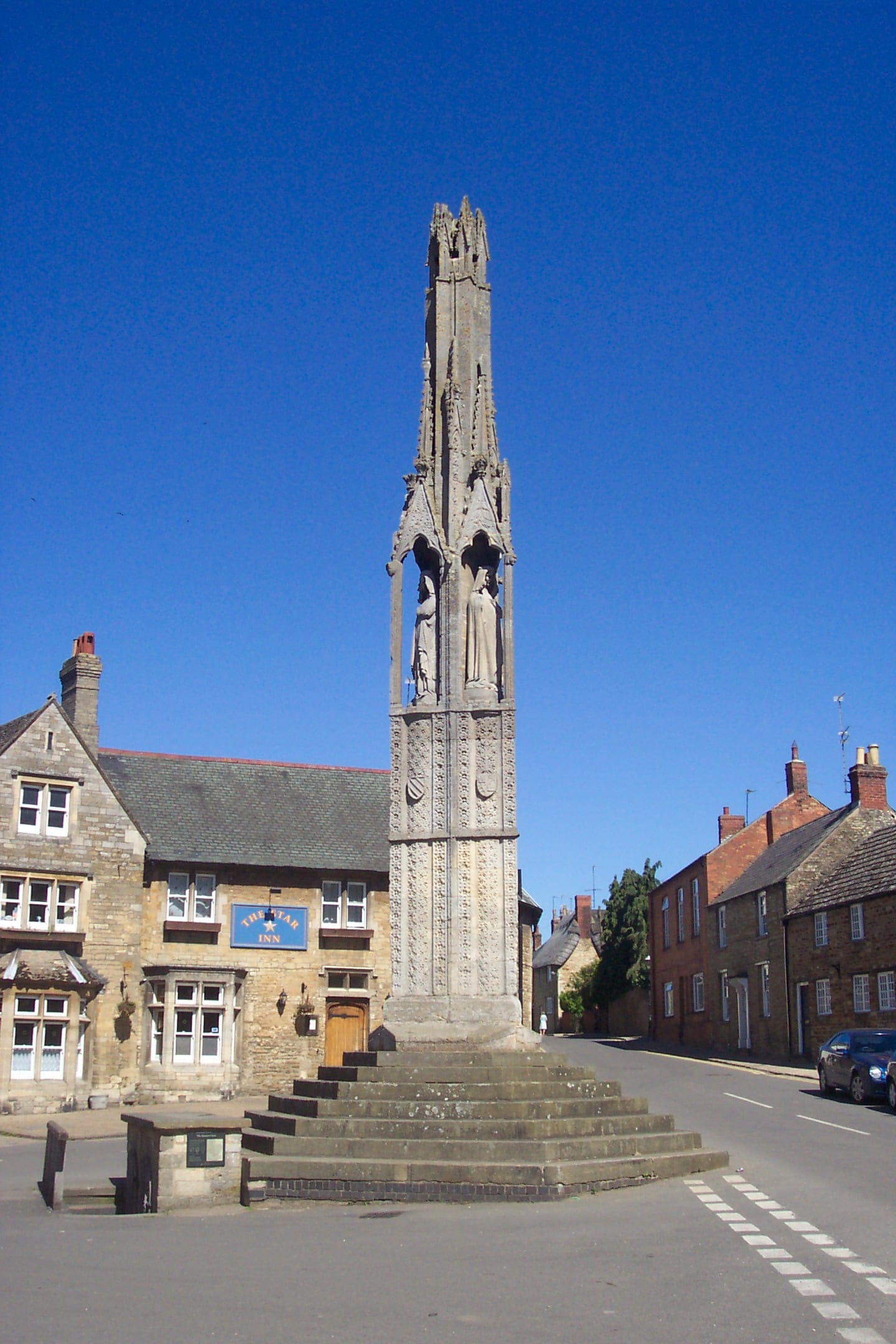
In London, the tall monument that stands in the forecourt of the Charing Cross railway station is a Victorian replica of the one that originally stood at the top of Whitehall. The site in Whitehall is now occupied by a statue of Charles I on horseback.
It appears that Edward really loved his wife, as he ordered that two wax candles were to burn for all time beside her tomb in Westminster Abbey. They burned for two and half centuries, and were extinguished only at the time of the Reformation.
Now that sounds like love in any language.
Below is a map of the route and location of the crosses:
